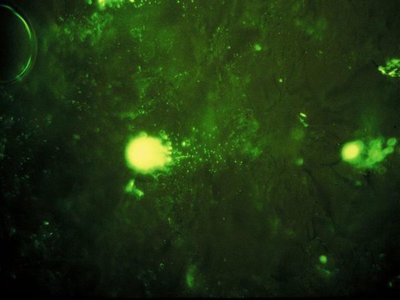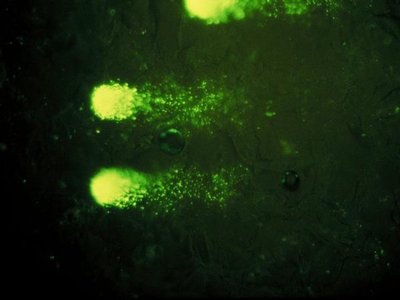February 18, 2004
Exposure to low-level magnetic fields causes DNA damage in rat brain cells, researchers find
Prolonged exposure to low-level magnetic fields, similar to those emitted by such common household devices as blow dryers, electric blankets and razors, can damage brain cell DNA, according to researchers in the University of Washington’s Department of Bioengineering.
The scientists further found that the damage from brief exposures appears to build up over time.
The new study is scheduled to be published in Environmental Health Perspectives, a journal of the National Institute of Environmental Health Sciences, and is available now on the Internet.
In the study, the researchers discovered that rats exposed to a 60-hertz field for 24 hours showed significant DNA damage, and rats exposed for 48 hours showed even more breaks in brain cell DNA strands. Exposure also resulted in a marked increase in brain cell apoptosis, or “cell suicide,” a process in which a cell self-destructs because it can’t repair itself.
A previous study showed similar damage, but it was conducted at 10 times the intensity and rats were exposed for just two hours. That indicates that the effects of exposure are cumulative, and duration can be as damaging as intensity, said Henry Lai, a UW research professor who conducted the study with fellow UW bioengineer Narendra Singh.
“In real life, people get this kind of exposure in brief doses — three minutes of exposure to a blow dryer, five minutes of exposure to an electric razor,” Lai said. “We found that this could add up over time and could eventually lead to some health effect.”
Since Lai first reported findings of magnetic field-induced DNA damage in 1995, several laboratories in Europe and India have reported similar effects.
Traditionally, scientists have held that low-level electromagnetic fields couldn’t be harmful because they weren’t potent enough to break chemical bonds in a living organism. Lai doesn’t disagree — he simply suspects a more subtle mechanism is at work. He believes that the fields, rather than causing harm directly, initiate a process within the cells that leads to the damage.
Lai and Singh hypothesize that exposure to magnetic fields affects the balance of iron in certain cells, leading to an increase in free iron within the cell. That free iron undergoes a chemical reaction, which releases “free radicals,” or charged atoms that attack cell structures, including DNA, lipids and proteins.
To test the idea, the researchers gave some of the rats drugs that either neutralize free radicals or decrease free iron before exposing the animals to the magnetic field. The treatments supported the hypothesis, effectively blocking the effects of the fields and protecting the rats’ brain cell DNA from damage.
One significant implication of this is that certain types of cells with higher iron content — such as brain cells — may be more susceptible to damage from electromagnetic fields.
DNA damage in and of itself isn’t unusual — all cells experience some DNA damage through normal wear and tear and repair themselves. Problems can occur when that damage is significantly increased because that also increases the likelihood of a mistake being made in the repair process, resulting in a mutation that could lead to such diseases as cancer.
Some types of DNA damage are more worrisome than others. A break on one side of DNA’s ladder-like double helix is relatively easy to fix. Repairs are much harder if both sides of the helix are broken, and, as a result, the probability of a mutation is substantially higher. Lai and Singh found both single and double strand breaks in the exposed brain cells.
Lai said people shouldn’t be overly alarmed by his research results. But they do need to be aware of the possibility that low-level electromagnetic fields might be harmful, especially given the fact that electrical devices are such a central component of daily life. And most household appliances — blow dryers, razors, electric blankets, ovens, coffee makers, clocks — emit a 60-hertz field. More work needs to be done to fully understand the process at work and the risks involved, Lai added. In the meantime, he has some advice:
“People should do what they can to limit their exposure to as little as possible, especially in relation to electrical appliances that are used very close to the body.”
###
For more information, contact Lai at (206) 543-1071 or hlai@u.washington.edu.
The study is available on the Web at http://ehp.niehs.nih.gov/docs/2004/6355/abstract.html




